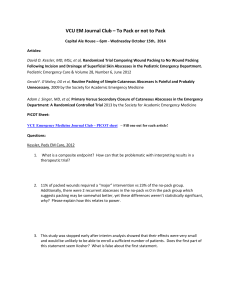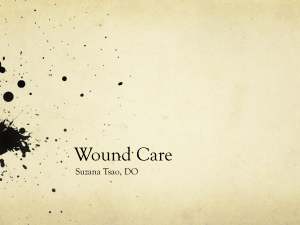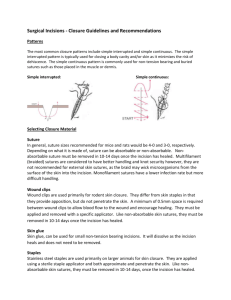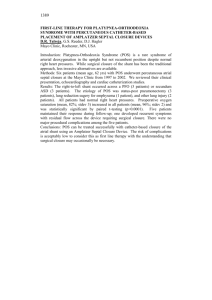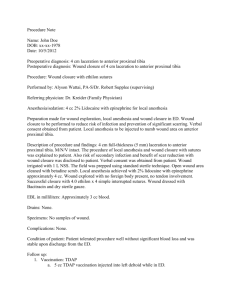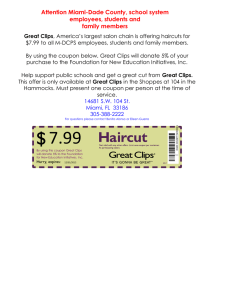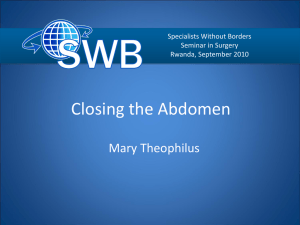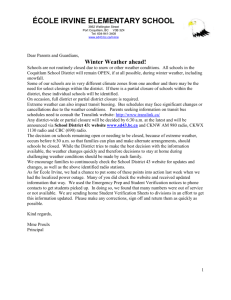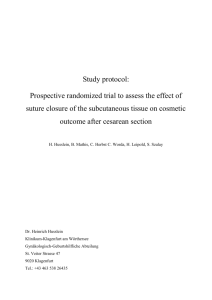Methods of Wound Closure
advertisement
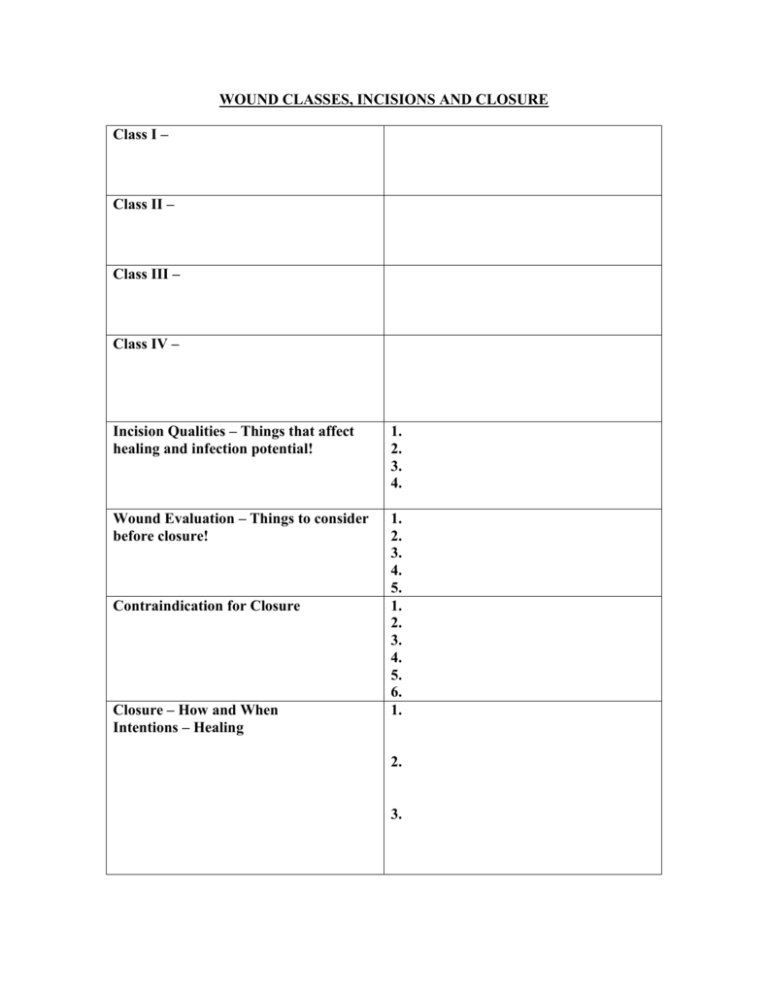
WOUND CLASSES, INCISIONS AND CLOSURE Class I – Class II – Class III – Class IV – Incision Qualities – Things that affect healing and infection potential! 1. 2. 3. 4. Wound Evaluation – Things to consider before closure! 1. 2. 3. 4. 5. 1. 2. 3. 4. 5. 6. 1. Contraindication for Closure Closure – How and When Intentions – Healing 2. 3. Methods of Wound Closure Sutures Staples Disposable/nondisposable Generally preloaded sterile cartridges Single/double row based on type Model name/# = stapler type and size Stainless steel, titanium, nonmetallic Color coded to match with stapler Previously discussed Staples -More Rapid method of general tissue closure – skin, organ, vessel Ligature Clips Absorbable/nonabsorbable Generally preloaded sterile cartridges Clip applier with single or multi clips Color coded to match applier ALTERNATIVES Tapes Clips – used to occlude tubular structures, most often vessels, or can be used to mark anatomical areas for later x-rays Appliers – Provide the mechanism to clamp the clips around the vessel ALTERNATIVES Skin closure strips or tapes – Used to approximate skin edges where flexibility and adherence are key Umbilical tape – White, woven cotton ligature used to isolate and suspend small vessels/structures – pedi and vascular Topical adhesives – Biologic or synthetic derivatives that glue surface tissues together to eliminate the need for postop suture removal Surgical glue – Used within incision to adhere deeper tissues and organs Silicon tubelike strand used for retracting and occluding blood vessels in MIS Performs tissue repair as it reinforces or bridges wound areas that are under tension or too weak. Strips with adhesive backing or not Adhesives Glues or gels, some requiring preparation, such as heating, stirring or breaking capsule Vessel loops Surgical mesh Absorbable or nonabsorbable Stainless steel Mesh - poly-fiber/propylene/glactin Biologic or synthetic mesh Bone wax Tissue replacement Wound Zippers Staplers – Provide the action (firing) that drive and secures the skin and vascular staples in tissue Sterile preparation rubbed into bleeding points on surface of bone for hemostasis Biologic or synthetic tissue grafts, implants or transplants Used for repeated opening and closing of a particular incision Uses, benefits, disadvantages of surgical staples and ligating clips instrumentation USES Specialty Surgical Staplers Vessel sealing/ligating system Benefits Disadvantages Loading, Handling and Cleaning Devices 1. Biopsy and resection 2. Anastomosis 3. Ligation 4. Division of Tissue 5. Organ, Fascia and Skin Closure 1. Skin, Fascia 2. Ligating and Dividing 3. Intestinal, Pulmonary 4. Endoscopic Permanently fuses tissues/vessels 1. Speed – Decreases op/anesthesia time 2. Efficiency – Minimizes tissue handling 3. Positive, minimal impact – Reduces blood loss, postop complications Acceleration of wound healing 1. Difficult with cost containment 2. Must be precisely placed 3. Potential for errors in technique Load cartridges per stapler/clip specific or mfg instructions Prepare for surgeon Disassemble and clean nondisposable units post surgery Sterilize multi-use units Dispose of single use in sharps box WOUND TERMINOLOGY ADHESION CICATRIX KELOID DEHISCENCE EVISCERATION GRANULATION DEAD SPACE DEVITALIZED
